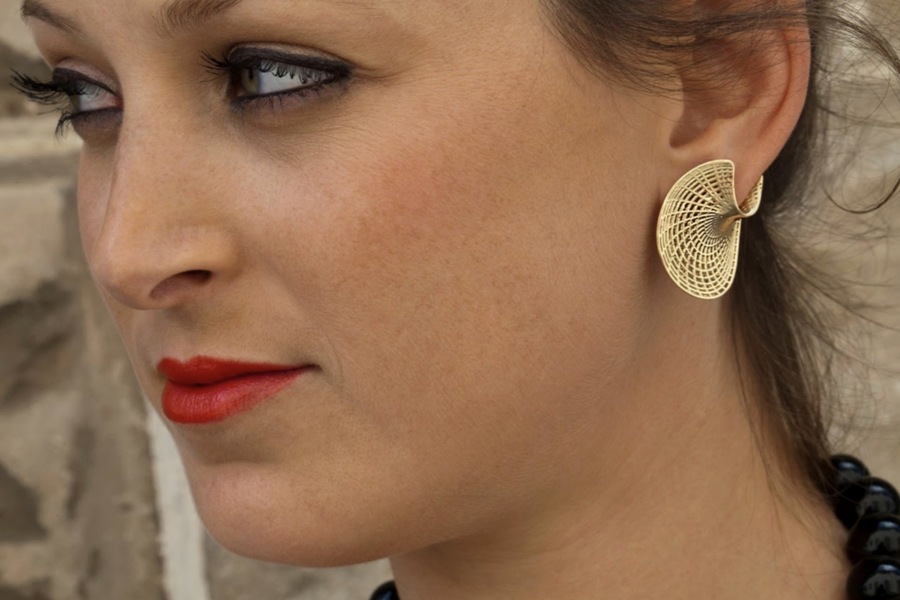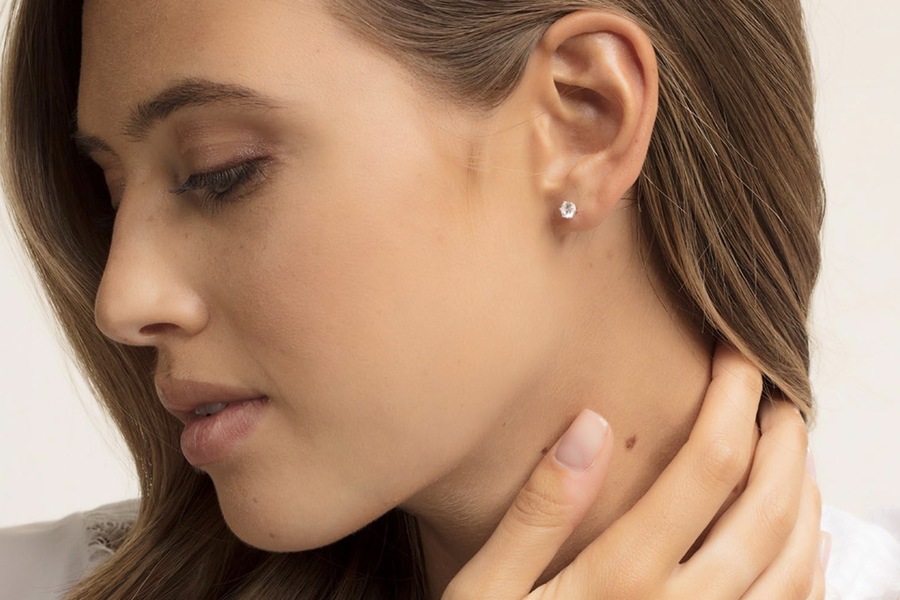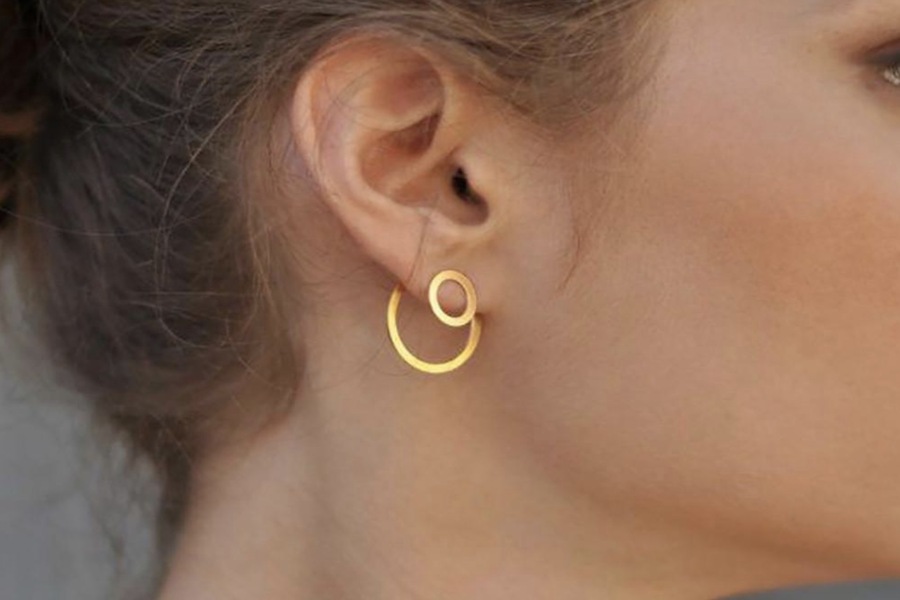Stud earrings hold a timeless allure in the world of jewelry, cherished across centuries for their understated elegance and remarkable adaptability. They have transcended trends to become a perennial favorite, seamlessly blending into everyday attire as well as enhancing the allure of memorable occasions.
Historical Roots of Stud Earrings
Stud earrings date back to ancient civilizations, where they were worn by both men and women as symbols of status, wealth, and beauty. Archaeological evidence suggests that stud earrings were popular in ancient Egypt, Mesopotamia, and Greece. These early pieces were often made of precious metals like gold and adorned with gemstones.
Popularity and Versatility in Jewelry Fashion
In contemporary fashion, stud earrings remain highly favored for their exceptional versatility. Adaptable to any ensemble, whether casual or formal, they effortlessly suit wearers of all generations. The enduring appeal lies in their minimalist charm, offering a timeless enhancement to any jewelry assortment. Their modest dimensions and subtle aesthetics ensure they harmonize gracefully with other accessories, adding a delicate touch without overshadowing them.
Trends in Designs and Materials
Over time, the evolution of stud earrings has seen advancements in both design and material choices. While gold continues to embody timeless elegance, alternatives such as silver, platinum, and titanium have risen in popularity. Furthermore, the inclusion of gemstones, diamonds, and pearls has enriched the diversity of stud earring styles, offering a range of captivating options to suit various tastes and occasions.
According to a survey by the Jewelry Industry Research Institute, gold remains the most popular material for stud earrings, accounting for 65% of sales in 2023. This is followed by silver (20%), platinum (10%), and other materials (5%).
Different Styles and Designs
Gold stud earrings for women boast a diverse array of styles and designs, catering to a wide spectrum of tastes and individual preferences. Contemporary options encompass intricate floral patterns, sleek geometric forms, and personalized motifs like initials or symbols. Gold diamond stud earrings stand out for their timeless allure and radiant brilliance, often selected to adorn memorable events such as weddings, anniversaries, and significant milestones.

The Importance of Gold Purity and Hallmarks
When acquiring gold stud earrings, grasping the fundamentals of gold purity and hallmarks is crucial. These elements not only define the jewelry’s worth and excellence but also validate its authenticity. Gold purity, quantified in carats (K), and hallmarks, official stamps inscribed on gold pieces, affirm their purity level and origin.
Gold Purity Standard
Gold purity is expressed in carats, with 24K being pure gold. The carat value indicates the proportion of gold in the alloy. Here is a breakdown of common carat values and their meanings:
- 24K: Known for its purity at 99.9% gold, it boasts a soft and pliable nature, though it’s less suitable for daily wear.
- 18K: Comprised of 75% gold and 25% other metals, this variant is celebrated for its durability and rich yellow hue, making it perfect for crafting high-quality jewelry.
- 14K: With a composition of 58.5% gold and 41.5% other metals, 14K gold is prized for its enhanced durability compared to 18K, offering a slightly lighter color.
- 10K: Featuring 41.7% gold and 58.3% other metals, 10K gold is recognized as the most enduring and cost-effective option, albeit with the lowest gold content.
Gold Purity Levels and Suitability
When selecting the purity of gold, it’s essential to consider how the jewelry will be worn. For stud earrings, 18K and 14K gold are favored for their optimal blend of purity, strength, and color richness. Higher-carat gold options such as 22K and 24K, while exceptionally pure, are softer and more susceptible to scratches and dents, which may limit their suitability for everyday use.
Effects of Carats
- Higher Carats (22K, 24K): These have a higher gold content, resulting in a richer color and greater value. However, they are softer and more prone to damage.
- Lower Carats (14K, 10K): These are more durable and resistant to scratches, making them ideal for daily wear. They are also more affordable due to the lower gold content.
Common Alloys Used in Gold Jewelry
Gold is often alloyed with other metals to enhance its durability and alter its color. Common alloys include:
- Copper: Adds strength and a reddish tint.
- Silver: Adds strength and a white tint.
- Nickel: Adds strength and a white tint (though it can cause allergies).
- Palladium and Platinum: Add strength and a white tint without causing allergies.
Hallmarks and Their Purpose
Hallmarks are official marks or series of marks stamped on gold jewelry to certify the purity of the metal and provide information about the origin and maker of the item. They serve as a guarantee of the gold content and protect consumers from fraud.
Types of Hallmarks
There are several types of hallmarks, including:
- Assay Mark: Indicates the purity of the gold.
- Maker’s Mark: Identifies the manufacturer or jeweler.
- Date Letter: Shows the year the item was hallmarked.
- Carat Mark: A number (e.g., 750 for 18K gold) representing the gold content.
- Assay Office Mark: Identifies the office that tested and certified the item.
Interpretation of Hallmarks Specific to Stud Earrings
When examining stud earrings, look for hallmarks on the posts or backings. These marks should include the carat value (e.g., 18K), the manufacturer’s mark, and the assay office symbol. In some cases, additional marks may indicate special certifications or design features.
Legal Requirements or Regulations Related to Hallmarks in the UAE
In the UAE, strict regulations govern the hallmarking of gold jewelry. The Emirates Authority for Standardization and Metrology (ESMA) oversees the certification process, ensuring that all gold jewelry meets rigorous purity standards. Every gold item must bear the ESMA hallmark, a clear indicator of its compliance with these stringent quality benchmarks.
The Relevance of Hallmarks in Gold Purchases
Hallmarks serve as a guarantee of the purity and authenticity of gold. They play a crucial role in safeguarding consumers against counterfeit items and ensuring compliance with legal standards. When buying gold stud earrings, it’s essential to verify the presence of hallmarks to confirm their quality and provenance.
Identifying Authenticity
Authentic gold stud earrings should have clear and legible hallmarks. Additionally, reputable jewelers will provide a certificate of authenticity detailing the gold content and any gemstones used.
The Importance of Certification in Ensuring Authenticity
Certification from a recognized authority, such as ESMA or the International Organization for Standardization (ISO), ensures that the gold jewelry meets strict quality standards. Certified jewelry is more likely to retain its value and appeal.
Methods to Test Gold Authenticity
- Acid Test: Involves applying nitric acid to a small area of the gold to observe any reaction.
- Electronic Tester: Uses electronic probes to measure the gold content.
- X-ray Fluorescence (XRF) Analyzer: Provides a non-destructive and accurate analysis of the gold composition.
Quality Assurance and Certifications
Certification Processes for Gold Jewelry
The certification process involves several steps, including:
- Assay Testing: The gold is tested for purity using various methods, such as XRF analysis or fire assay.
- Marking: Approved items are stamped with the appropriate hallmarks.
- Documentation: A certificate of authenticity is issued, detailing the gold content and any other relevant information.
Buying Guide
- Consider Carat Value: Choose a carat value that balances purity and durability, such as 18K or 14K.
- Check for Hallmarks: Ensure the earrings are hallmarked to verify their authenticity and purity.
- Evaluate Design: Consider the style and design that best suits your taste and wardrobe.
- Inspect Gemstones: If the earrings feature gemstones, check their quality and certification.
- Verify Certification: Buy from reputable jewelers who provide certification for their gold jewelry. Brands like Varudai are known for their high-quality gold jewelry and adherence to strict certification standards.

Dubai – The Ultimate Destination for Purchasing Gold
Dubai is renowned worldwide as a leading gold trading hub. The city’s strategic location, tax-free status, and strong regulatory framework make it an ideal place to buy gold.
Historical Significance of Gold Trading in Dubai
Gold trading in Dubai has a rich history dating back to the early 20th century. The city’s gold souks have been bustling centers of commerce for decades, attracting traders and buyers from around the world.
According to the Dubai Multi Commodities Centre (DMCC), Dubai accounts for approximately 25% of the global physical gold trade. The city’s gold market continues to grow, with an estimated value of over 275.25 billion AED in annual gold trade.
Cultural Importance of Gold in the Middle East
Gold holds significant cultural importance in the Middle East. It is often given as gifts during weddings, religious ceremonies, and other celebrations. The high demand for gold jewelry in the region contributes to Dubai’s prominence as a gold trading center.
Tax-Free Status on Gold Purchases
One of the key advantages of buying gold in Dubai is the tax-free status on gold purchases. This allows buyers to acquire gold jewelry at competitive prices compared to other parts of the world.
Benefits for International Travelers and Residents
International travelers and residents benefit from Dubai’s competitive gold prices, extensive variety, and stringent quality standards. The city’s gold souks and modern malls offer a wide range of gold jewelry, from traditional designs to the latest earrings designs in gold.
Security Measures to Protect Buyers
Dubai implements robust security measures to protect gold buyers. The Dubai Central Laboratory Department (DCLD) regularly inspects gold items to ensure they meet purity standards. Additionally, gold traders must adhere to strict regulations set by the Dubai Gold & Jewellery Group (DGJG).
Conclusion
When buying gold stud earrings for women, understanding gold purity and hallmarks is crucial. These elements guarantee the jewelry’s quality, authenticity, and value. By selecting the appropriate carat rating, verifying hallmarks, and purchasing from reputable jewelers, consumers can ensure informed decisions and long-term enjoyment of their gold stud earrings. Dubai, renowned as a hub for gold trading with its tax-free status and stringent quality controls, stands out as an ideal destination for purchasing gold jewelry. Whether seeking gold diamond earrings or the latest designs in diamond earrings, Dubai provides a diverse range of choices to cater to various preferences and budgets.

Skier, father of 3, drummer, International Swiss style practitioner and RISD grad. Acting at the intersection of modernism and elegance to craft experiences that go beyond design.
